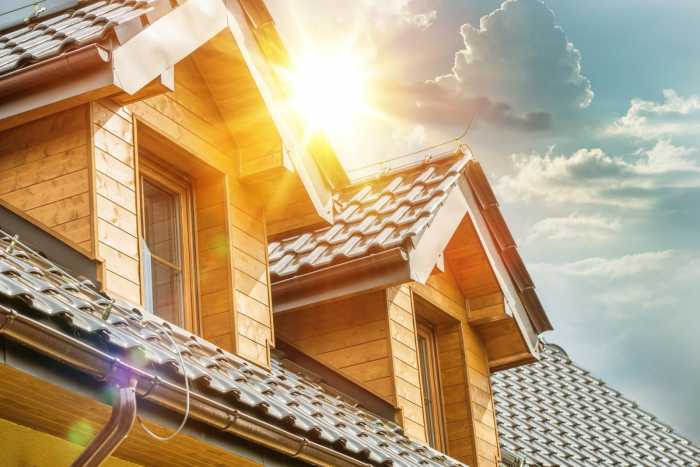Installing a new roof is not only expensive but making the right choice can be stressful. When there’s a sudden leak in your house from a failing roof, immediate action is necessary to prevent further destruction of your home and belongings.

Most people don’t know where to start. A new roof should fit the style of your home, the structure, and your budget.
We’ve put together a simple guide below on the basics of buying a new roof.
How Do I Know If I Need a New Roof?
A new roof is a big investment, but it’s one you can’t put off until it’s too late. Here are some signs that you need a new roof:
Worn and damaged shingles: Does your roof look patchy or can you see the edges of the shingles curled up? Worn shingles can allow excess heat to enter your home, driving up your utility bills, and curled shingles allow wind to push moisture into your roof.
Cracked shingles: Cracks in the shingles allow moisture to enter and the possibility of leaks increases.
Leaks: Even if your shingles seem okay, leaks can still happen. Components like deck paper, flashing, moisture barriers, and vent stack boots deteriorate with age.
Structural damage: Wind, hail, and water damage are some of the top claims on homeowners’ insurance. Have a contractor check your roof after a major storm to check for structural damage to your roof. Replacing your entire roof could be cheaper than repairing storm damage.
Looks bad: If you’re looking to sell, aesthetics matter. If your roof has moss, algae, stains, or if it’s old, consider a new layer of shingles.
Shopping for a New Roof
Before selecting what material you want for your roof, make sure it’s not too heavy for the frame, whether it will go with the style of the house, how long it will last, and what warranties are available. You can learn more about installing a new roof from this Los Angeles based roofing company.
There are many different types of roofs available on the market today. Here are some options:
Asphalt: This is the most common type of roof used in American homes and falls into three different categories: standard, architectural, and multilayered architectural. Asphalt offers higher fire and wind resistance.
Metal: Metals available are: steel, aluminum, copper, or a zinc alloy. Metal is lightweight and durable with good resistance to fire and wind. Prices range from moderate to more expensive.
Plastic polymer: This material can resemble wood, shakes, or slate. It has good fire and wind resistance and falls within a moderate price range.
Clay: Clay tiles can give your house a Spanish or Italian look. Tiles have great fire resistance, low wind, and are on the expensive side.
Concrete: A mixture of Portland cement and sand, concrete is heavy, long-lasting, with great fire resistance and in a moderate price range.
Slate: This is one of the most expensive materials to install and requires a trained worker. Slate is durable and provides good resistance to the elements.
Wood: Made from rot-resistance wood such as cedar and redwood, there’s good wind resistance but this material should be treated with a fire retardant.
Before You Choose
Choosing your new roof is a big decision and will last you for years to come. Make sure it will not only do its job and protect your home but fit the style of your house as well.
Be sure to check out our blog for more home guides and ideas!










